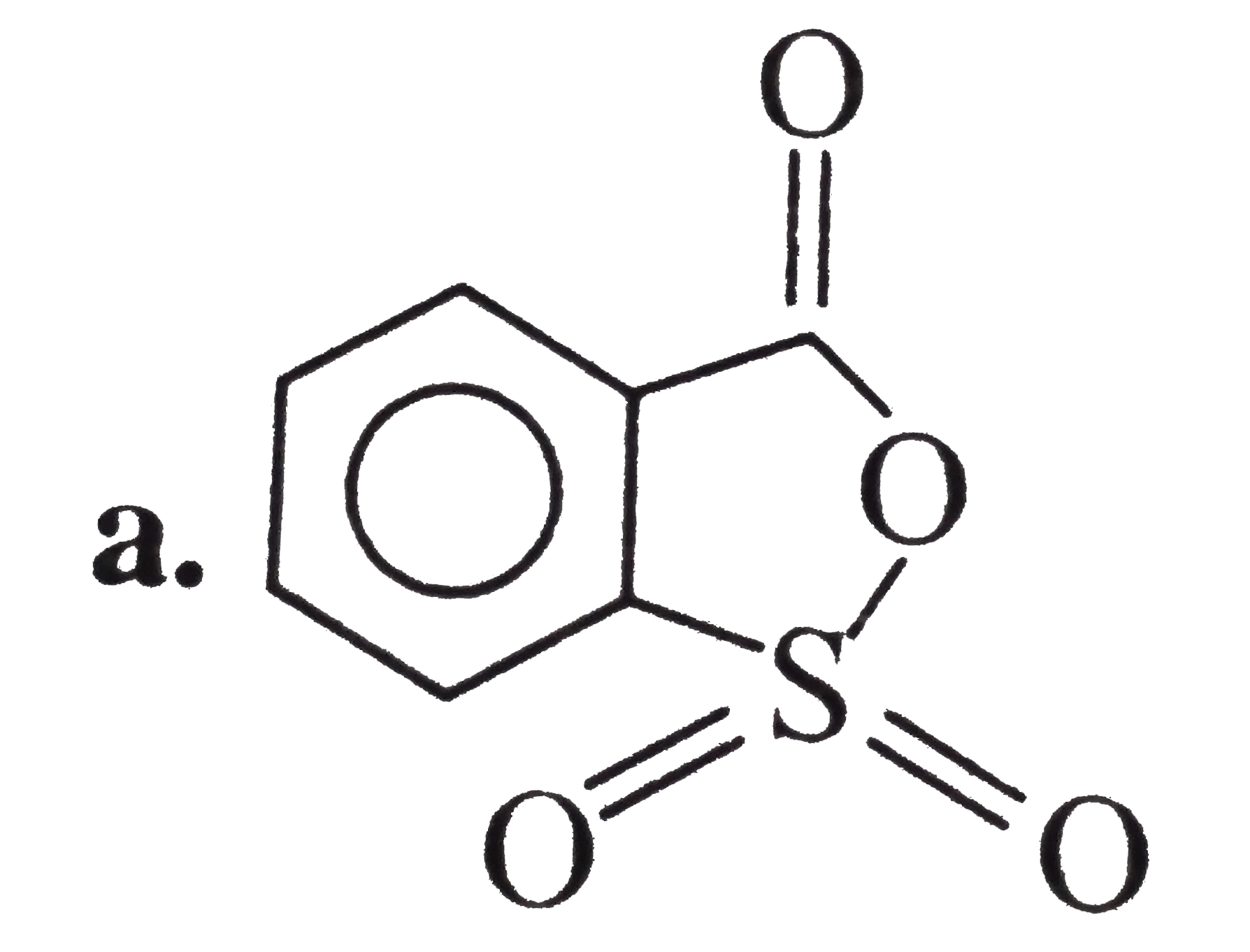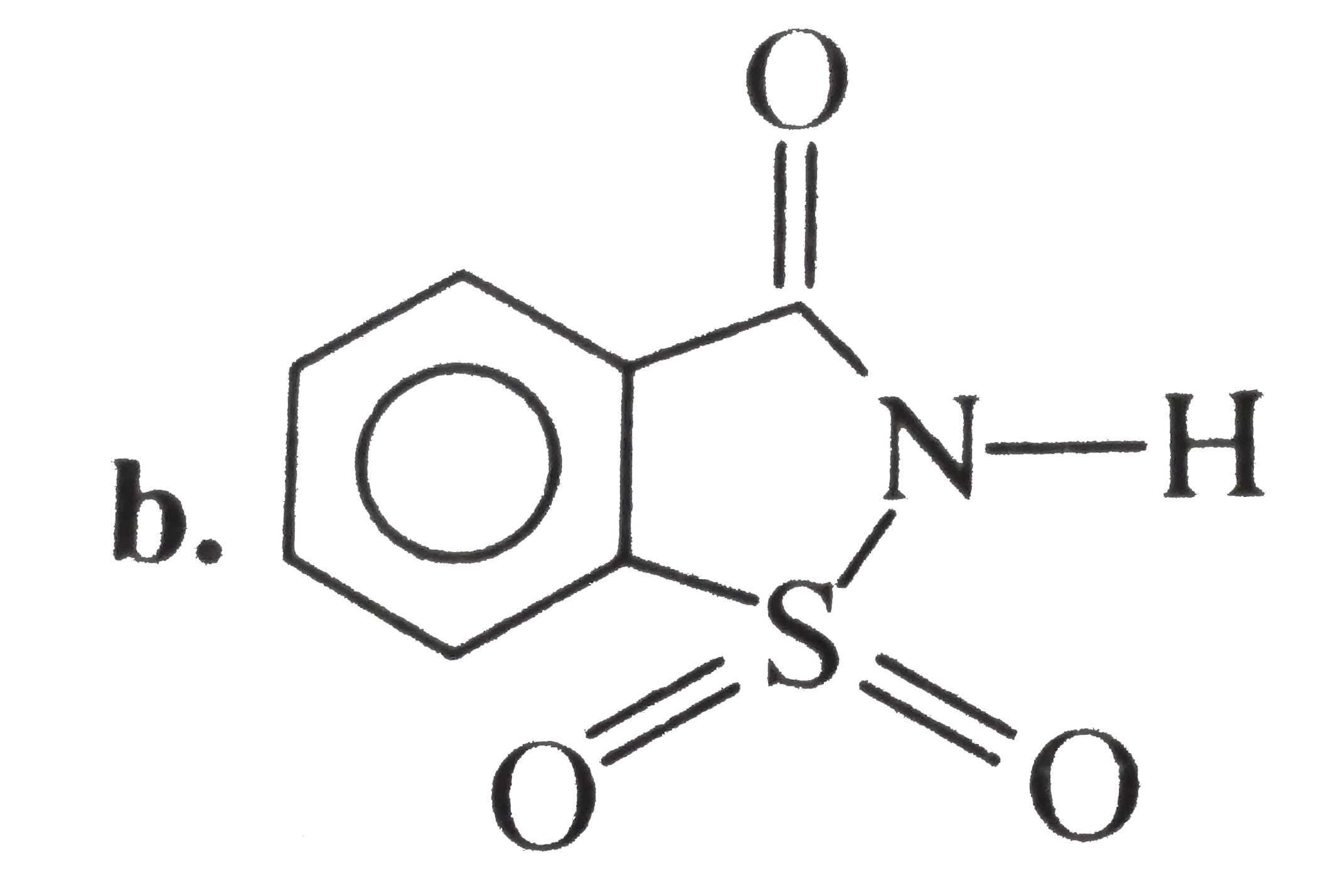
Compound (F) is :


Both (a) and (b)
None
The correct Answer is:B
(b)  .
.
Topper's Solved these Questions
- CARBOXYLIC ACIDS AND THEIR DERIVATIVESBOOK - CENGAGE CHEMISTRYCHAPTER - CARBOXYLIC ACIDS AND THEIR DERIVATIVESEXERCISE - Exercises (Multiple Correct)
35 Videos
- CARBOXYLIC ACIDS AND THEIR DERIVATIVESBOOK - CENGAGE CHEMISTRYCHAPTER - CARBOXYLIC ACIDS AND THEIR DERIVATIVESEXERCISE - Exercises (Singlecorrect)
64 Videos
- CARBOXYLIC ACIDS AND THEIR DERIVATIVESBOOK - CENGAGE CHEMISTRYCHAPTER - CARBOXYLIC ACIDS AND THEIR DERIVATIVESEXERCISE - Exercises (Subjective)
19 Videos
- BIOMOLECULES, POLYMERS AND CHEMISTRY IN EVERYDAY LIFEBOOK - CENGAGE CHEMISTRYCHAPTER - BIOMOLECULES, POLYMERS AND CHEMISTRY IN EVERYDAY LIFEEXERCISE - QUESTION BANK
8 Videos
- CHEMICAL KINETICSBOOK - CENGAGE CHEMISTRYCHAPTER - CHEMICAL KINETICSEXERCISE - Archives Subjective
23 Videos
Similar Questions
An organic compound (A) gives positive Liebermann's nitroso reaction and on treatment with CHCl2/KOH followed by hydrolysis gives (B) and (C). Compound (B) gives pink colour with Schiff's reagent but not (C) which is steam volatile. (C) on treatment with LiAlH4 gives (D) (C7H5O2) which on oxidation gives E. 'E' reacts with acetic anhydride and gives compound F. calculate molecular weight of 'F'.
View SolutionAn acidic compound (A) , C4H8O3 , loses its optical activity on strong heating yielding (B), C4H6O2 , which reacts readily with KMnO4 . (B) forms a derivative (C) with SOCI2, which on reaction with (CH3)2NH gives (D). The compound (A) on oxidation with dilute chromic acid gives an unstable compound (E) which decarboxylates readily to give (F), C3H6O. The compound (F) gives a hydrocarbon (G) on treatment with amalgamated Zn and HCI. Give structures of (A) to (G) with proper reasoning.
View Solution
Knowledge Check
Four isomeric optically active compounds NaHCO3−−−−−→CO2(g)(A,B,C,D)(C4H8O3)
Compound (A)LAH−−→(E) (Archiral compound)
Compound (B)KMnO4−−−−−→orCrO3 Inert to oxidation.
Compound (C)−−−−−−−−→NaOI/H3O⊕CHI3(Yellowppt.)+Compound(F).
Compound (D) is :A(I)B(II)C(III)D(IV)Four isomeric optically active compounds NaHCO3−−−−−→CO2(g)(A,B,C,D)(C4H8O3)
Compound (A)LAH−−→(E) (Archiral compound)
Compound (B)KMnO4−−−−−→orCrO3 Inert to oxidation.
Compound (C)−−−−−−−−→NaOI/H3O⊕CHI3(Yellowppt.)+Compound(F).
Compound (C) is :A(I)B(II)C(III)D(IV)Four isomeric optically active compounds NaHCO3−−−−−→CO2(g)(A,B,C,D)(C4H8O3)
Compound (A)LAH−−→(E) (Archiral compound)
Compound (B)KMnO4−−−−−→orCrO3 Inert to oxidation.
Compound (C)−−−−−−−−→NaOI/H3O⊕CHI3(Yellowppt.)+Compound(F).
Compound (B) is :A(I)B(II)C(III)D(IV)
An acidic compound (A) C4H8O3 loses its optically activity on strong heating yielding (B), C4H6O2 which reacts readily with KMnO4. (B) forms a derivative (C ) with SOCl2, which on reaction with (CH3)2NH gives (D). The compound (A) on oxidation with dilute chromic acid gives an unstable compound (E) hich decarboxylates readily to give (F), C3H6O. The compound (F) gives a hydrocarbon (G) on treatment with amalgamated Zn and HCl. Give the structures of (A) to (G) with proper reasoning.
View SolutionCompound (E) when treated with KCl gives an orange red compound (F) which is used as an oxidising reagents.
View SolutionFour isomeric optically active compounds NaHCO3−−−−−→CO2(g)(A,B,C,D)(C4H8O3)
Compound (A)LAH−−→(E) (Archiral compound)
Compound (B)KMnO4−−−−−→orCrO3 Inert to oxidation.
Compound (C)−−−−−−−−→NaOI/H3O⊕CHI3(Yellowppt.)+Compound(F).
Compound (A) is :
View SolutionCompound (x)(m.f=C7H8N), on reaction with NaNO2 and conc. HCl at O∘C followed by β− naphthol gives orange coloured dye. Compound (x) is :
View SolutionAn organic acid (A) reacts with concentrated oxide (C) and a diatomic oxide (D). When D reacts with chlorine gas a poisonous gas (E) is evolve. This gas with ammonia gives an organic compound (F). Which of the following are true.
View Solution
